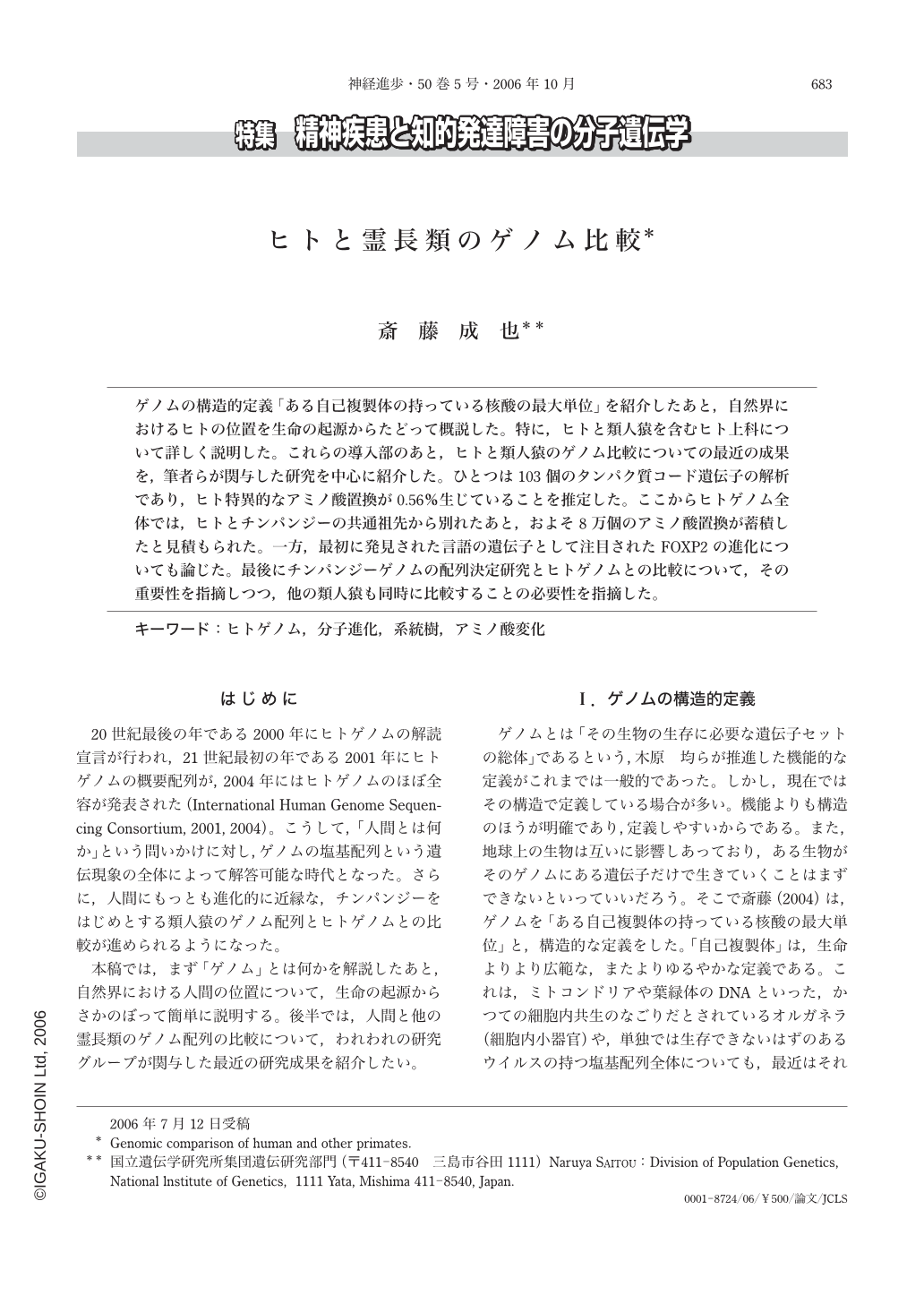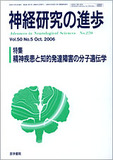Japanese
English
- 有料閲覧
- Abstract 文献概要
- 1ページ目 Look Inside
- 参考文献 Reference
ゲノムの構造的定義「ある自己複製体の持っている核酸の最大単位」を紹介したあと,自然界におけるヒトの位置を生命の起源からたどって概説した。特に,ヒトと類人猿を含むヒト上科について詳しく説明した。これらの導入部のあと,ヒトと類人猿のゲノム比較についての最近の成果を,筆者らが関与した研究を中心に紹介した。ひとつは103個のタンパク質コード遺伝子の解析であり,ヒト特異的なアミノ酸置換が0.56%生じていることを推定した。ここからヒトゲノム全体では,ヒトとチンパンジーの共通祖先から別れたあと,およそ8万個のアミノ酸置換が蓄積したと見積もられた。一方,最初に発見された言語の遺伝子として注目されたFOXP2の進化についても論じた。最後にチンパンジーゲノムの配列決定研究とヒトゲノムとの比較について,その重要性を指摘しつつ,他の類人猿も同時に比較することの必要性を指摘した。
New definifition of genome from structural point of view, i.e., largest unit of nucleotides in one self-replicating system, is first introduced. Then human's place in nature was briefly explained,starting from origin of life. Superfamily Hominoidea including human and apes was particularily discussed in detail. After these introductions, our recent studies were mainly reviewed on human and ape genome comparisons. One was analysis of 103 protein coding genes, and 0.56% of human specific amino acid changes were estimated. From this estimate, approximately 80,000 amino acid substitutions were supposed to occur in human lineage after separation from common ancestor of human and chimpanzee. Evolution of FOXP2 gene, first“language”gene, was also discussed. Lastly, importance of chimpanzee genome sequencing studies so as to compare them with human genomes were mentioned, while stressing necessity of simultaneous comparison of other ape genomic sequences.

Copyright © 2006, Igaku-Shoin Ltd. All rights reserved.


